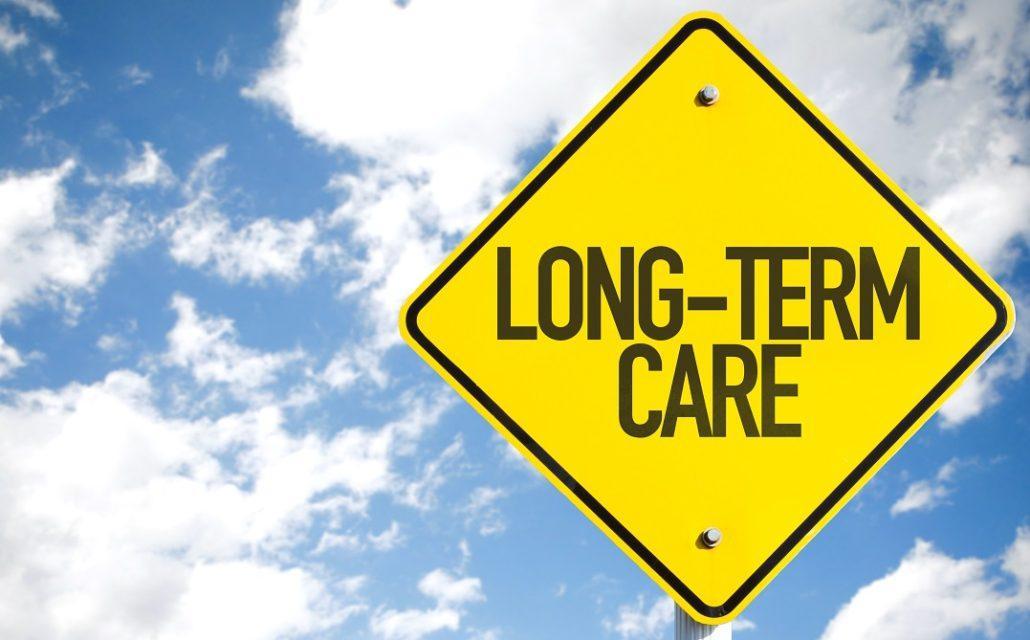![]() Stark- Changes in patient and doctor relationships in United States health care.pdf
Stark- Changes in patient and doctor relationships in United States health care.pdf
Key Findings
- The relationship between patients and doctors is being progressively and relentlessly changed by government intervention.
- The vast majority of health care in the U.S. is now paid by a third party, either an employer or a government entitlement program.
- Demand and spending on health care have exploded, which is consistent with the economic principle that utilization of a product or service will increase dramatically if consumers think someone else is paying.
- Multiple changes to provider payments have been made over the past 40 years to reign in the ever rising costs of health care.
- This has led to a gradual, but definite, shift in the U.S. health care system. The doctor in solo small group practice will eventually disappear. For financial stability and to decrease government-required paperwork, doctors will be employed by hospitals or will join large physician groups. Hospitals will merge into ever larger entities.
- The most important person in the health care system should be the patient, not cost-conscious employers or distant government bureaucrats. The patient, as a consumer of health care, should determine the value and quality of services received and how much doctors should be paid to provide them. Free market forces, not the government, should define the relationships between patients and providers.
- Solutions:
- Change the tax code
- Eliminate government benefit mandates
- Reform Medicare and Medicaid
- Enact tort reform
- Make health “insurance” true risk management insurance
- Encourage price transparency
Introduction
The relationship between patients and doctors is one of the most personal of any professional interactions. Yet this relationship is progressively and relentlessly being eroded by government regulation. With the best of intentions and with a high level of compassion, Americans have gradually allowed government officials to control our health care delivery system, and now we are experiencing those relationship changes.
Background
Until World War II, patients paid doctors on a fee-for-service (FFS) basis, just as they would pay other professionals, such as lawyers, architects and auto mechanics for their services. Few people had health insurance. During the war, the government imposed strict wage and price controls on the economy, but officials did allow employers to pay for employee health insurance as a way of supplementing capped wages.
This policy was the beginning of a health care system in the United States in which a non-involved third party, the employer, paid doctors for medical services provided to employees and their families. The government further entrenched this third party employer-paid model by allowing employers to deduct the cost of employee health benefit expenses from their corporate taxes. Doctors were still paid on a fee-for-service basis, either by employers directly or by employers through insurance companies.
In 1965, the government became directly involved as a third-party payer in the U.S. health care system when Congress passed the Medicare and Medicaid entitlements. Medicare is socialized health care for seniors, paid for by payroll taxes on workers, the federal general fund and individual premiums. Medicaid, at least in theory, is a safety-net insurance plan for low-income people and the disabled. It is paid for by both state and federal taxpayers who, of course, are the same people. Doctors have traditionally been paid on a FFS basis in both entitlement programs.
Government officials further involved themselves in health care relationships when Congress passed the Affordable Care Act (ACA), or Obamacare, in 2010. The ACA expands Medicaid and gives taxpayer-subsidies to middle-income people to help them buy health insurance through state and federal insurance exchanges.
The vast majority of health care in the U.S. is now paid for by a third party, either employers or government officials. Demand and spending on health care have exploded, which is consistent with the economic principle that utilization of a product or service will increase dramatically if consumers believe someone else is paying.
Past efforts to solve the health care spending crisis
By the mid-1980s, the government was no longer a disinterested third-party payer, simply paying health care bills as they arrived. To cover exploding costs in Medicare, Congress increased worker payroll taxes, raised premiums and devoted more money from the federal general fund. In addition, elected officials directed more taxpayer money on both the federal and state levels into the Medicaid program.
Doctors were still paid on a fee-for-service basis for the care and medical skill they provided to patients, but state officials started ratcheting down Medicaid payments. The federal government began to control Medicare payments using wage controls for doctors and a complex system called diagnosis-related group (DRG) for hospital payments. Government officials use the DRG system to pay hospitals a bundled or fixed amount of money for a specific patient diagnosis or operation, not based on actual services provided to an individual patient. There are modifiers for complications and extended lengths-of-stay, but essentially hospitals that are more efficient and have fewer patient-complications do better financially.
Officials gradually decreased doctor payments from Medicare from the late 1980s until 1997. Part of the Balanced Budget Act of 1997 was a Medicare payment model for doctors called the sustainable growth rate (SGR). The SGR fixed doctor payments to target rates of health care spending growth and compared that growth to changes in the national gross domestic product (GDP).
If health care costs decreased or stayed constant in relationship to GDP, doctors would get more money. If costs rose, they would get less. Not surprisingly, health care costs continued to rise. Congress subsequently amended the SGR 17 times to guarantee that doctor reimbursements would not decrease. These temporary “doc fixes” caused uncertainty and anxiety among physicians.
In 2015, with bipartisan support, Congress passed a permanent “doc fix” called the Medicare Access and Children’s Health Insurance Program Reauthorization Act (MACRA). It replaces the SGR with more stable payments to doctors, provided they meet government-mandated rules. Unfortunately, Congress did not provide a meaningful funding source, so MACRA will add $141 billion to the federal debt over the next ten years and $500 billion over the next twenty years. In other words, what has been hailed as a great bipartisan solution to doctor payments is really just the current Congress passing debt and tough budget decisions on to future lawmakers.
MACRA also discourages FFS and promotes alternative payment models. Ultimately money will only be paid to doctors in accountable care organizations (ACOs) or medical homes. These are simply the new names for traditional health maintenance organizations (HMOs). They essentially require doctors and hospitals to join in some type of financial partnership. From experience since the 1990s, HMOs can control costs through a gate-keeper rationing system, but patients have been very dissatisfied.
The ACA also encourages the use of ACOs and medical homes and further expands their use.
What all these changes mean for patients is a gradual, but definite, shift in the U.S. health care system. We are already seeing these changes and they are coming at a more rapid rate. The doctor in solo practice or in a small group will eventually disappear. For financial stability and to decrease government-required paperwork, doctors will be employed by hospitals or will have to join large physician groups. Hospitals will merge to form ever larger entities.
Ultimately, the FFS model will disappear in health care, although it will remain the primary way consumers pay for all other professional services. “Quality” will become the new buzzword and providers will be paid based on government-dictated criteria. This concept, called pay-for-performance (P4P), has already begun. The meaning of “performance”, however, will be decided by public officials. Quality and how it is paid for will be determined by government bureaucrats, not by patients.
Many people would argue that since the government is paying for health care, it has the right and the responsibility to dictate what care people can receive and how much providers will be paid. This, of course, leaves patients out of the decision process and completely changes the intimate and personal relationship patients have with their doctors. Americans deserve better.
Policy solutions
Third-party payers, whether employers or the government, are the cause of the fundamental economic distortion in the U.S. health care delivery system. This distortion can be solved by removing employers and the government as direct payers of most health care. Policymakers should allow patients, working with their providers, to make their own medical decisions and to control their own health care dollars.
Policymakers can help patients re-establish a close and direct relationship with their doctors and help control rising costs in health care by implementing meaningful policy change.
1. Change the tax code
Congress should change the federal tax code and allow individuals to deduct their health expenses from their taxable income, just as businesses and privately insured self-employed individuals do. This would give employees the freedom to purchase their own insurance and would allow employers to decrease their overhead and offer higher wages.
Individual insurance coverage, not tied to employment, would end the effect of “job lock” by allowing people to keep their health care coverage as they move from job to job, and from state to state.
Why should an employer provide health benefits in the first place? Employees already provide all other personal needs, such as food, clothing, housing and transportation, out of the wages they earn. Why not simply adjust wages upward and allow employees to buy their own individual plans? This would end third-party payer distortion and would put workers directly in charge of managing their health care costs.
2. Eliminate government benefit mandates
Mandates set by state and federal policymakers now restrict patient choice in the purchase of individual health insurance, with the effect of making coverage more expensive. Washington state currently has 58 mandates that overlap with the ten mandates in the ACA. Instead of offering people a range of choices, mandates require all individual plans to provide the same benefits and increase costs for everyone. For example, why should a 25-year-old single man be forced to pay for obstetrical coverage?
Mandates are the classic example of economic rent seeking, by which politically powerful lobby groups induce lawmakers to include their services in every insurance policy. What better way to profit than by passing a law that forces people to buy health coverage they won’t need and many don’t want?
A reasonable first step would be to repeal the ban on interstate commerce in health insurance. People could then purchase any approved insurance plan from any insurance company in any state. Literally overnight, consumers would have a huge increase in personal choices and the health insurance market would become much more competitive and affordable.
3. Reform Medicare and Medicaid
The non-partisan and government-run Congressional Budget Office reports the Medicare program is not financially sustainable in its present form. Costs are rising, the number of workers to support the program is proportionately decreasing, and the number of recipients is about to increase dramatically as baby boomers reach retirement.
We now have an entire generation that has grown up with Medicare, has paid into it, and expects something in return. We also have young people who understand the bankrupt nature of the entitlement program and do not believe Medicare will exist when they reach age 65.
The solution must account for young people and the elderly, as well as for future generations. We have a moral obligation to the seniors already enrolled in the program and those approaching retirement. Simple first steps to fixing Medicare would be to gradually raise the age of eligibility to 68 or 70 years and to require means testing for enrollment. Instead of forcing seniors into a single-payer system like Medicare, give them vouchers or insurance premium support and allow them to purchase insurance in the private market.
Future generations should be allowed to take their individual health care insurance into retirement and not be forced into a government program. No surprise, younger people as a group are healthier than older people, so as the younger generation saves, their health care insurance nest egg can build until they need it in later years. Allow younger generations to use health savings accounts and high deductable insurance plans in their retirement years.
Medicaid, the program for poor families, is in the same unsustainable financial condition as Medicare — perhaps worse. We must care for the poor, but giving them mandated, unlimited, first-dollar coverage is both financially and ethically unsound. A voucher system allowing personal choice and a financial reward for dollars saved would be an excellent start to solving Medicaid’s problems.
States should also receive Medicaid waivers and block grants from the federal government. For example, Washington state under then Governor Gregoire requested a federal waiver and was denied. States could budget more efficiently with a fixed yearly amount of money rather than the open-ended entitlement of the current Medicaid program. They could also design their own innovative programs without being stopped by the federal government.
States should be allowed to return to the original income requirement of 133 percent of the federal poverty level for their Medicaid recipients, instead of the 250 to 300 percent they now use. At 300 percent, a single person earning $35,000 per year or a couple earning $48,000 per year would qualify for Medicaid in 2015.
4. Enact tort reform
Nearly 20 percent of our country’s health care costs are spent on the legal system through attorney fees, court costs, malpractice insurance premiums, and most importantly, defensive medicine. Medical outcomes in the U.S. are no worse, and in many ways much better, than in other countries, yet our legal system burdens doctors and hospitals much more than the legal systems in other countries.
Enacting meaningful caps on non-economic damages offer the main solution to our current legal awards lottery and would still protect patients from economic losses.
5. Make health “insurance” true risk management insurance
We also need to fundamentally change how we view health insurance. Instead of “insurance” paying for every health-related activity, like a pre-paid benefit, it should work like other forms of risk management insurance, such as car and home owner insurance.
Just as no one uses insurance to pay for gas or to mow the lawn, we need to move away from the idea of health insurance covering all minor health-related events. True indemnity insurance should be there for catastrophes and emergencies. Non-crisis, day-to-day health expenses should be paid out of pocket, just like routine car repair.
An effective mechanism to do this is a tax-free health savings account (HSA). These are being used by an increasing number of Americans. HSAs require a person or family to purchase a high-deductable catastrophic insurance policy, but allow a tax-advantaged savings account for day-to-day medical purchases. Savings in an HSA can be rolled over from year to year and can be taken from one job to another. Accumulated HSA funds can also be used to supplement a person’s retirement health care expenses.
Increase the use of high-risk pools for high-use and high-cost patients. For example, kidney dialysis patients are an identifiable group that uses considerable health care resources. Through various funding mechanisms, their health care costs could be supplemented by placing them in high-risk pools.
6. Encourage price transparency
Encourage more price transparency in the system and allow doctors and other health care providers to compete on price as well as quality, just as professionals do in other parts of our economy. Patients, as consumers of health care, can then become savvy shoppers, just as they are in other economic activities like purchasing food, shelter and clothing.
The most important person in the health care system is the patient, not cost-conscious employers or distant budget-driven government bureaucrats. The patient, as a consumer of health care, should determine the value and quality of services received and how much doctors should be paid to provide them. Market forces, not the government, should drive the relationships between patients and providers.
Moving away from the third-party payer interference that started in the 1940s and widening the range of available and affordable consumer-based choices in health care would re-connect people with providers, and show that policymakers respect the close private relationship that exists between patients and their doctors.





